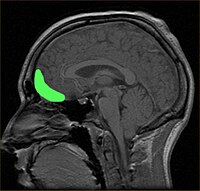
Photo from wikipedia
Background Low-stakes crimes related to alcohol and/or drugs are common around the world, but research is lacking on police–suspect interactions of such crimes. A large proportion of these suspects are… Click to show full abstract
Background Low-stakes crimes related to alcohol and/or drugs are common around the world, but research is lacking on police–suspect interactions of such crimes. A large proportion of these suspects are intoxicated during interrogations, and many may have substance use disorder, making them potentially vulnerable to interrogative pressure. Methods To address this lack of knowledge, the taxonomy of interrogation methods framework (i.e., 60+ interrogation techniques classified into five domains) and a common classification of question types (appropriate vs. inappropriate) were applied in the coding of written police interrogations. Two archival studies, one pilot (Study 1, N = 39) and one main study (Study 2, N = 97) analyzed police interrogations with suspects of alcohol- and drug-related crimes in Sweden. Results For both Study 1 and 2, suspects showed signs of alcohol and/or drug intoxication, hangover or withdrawal in more than 50% of all interrogations. In Study 2, additional coding indicated that suspects displayed signs of substance use disorder in 57% of the interrogations. The main results from both studies revealed a large number of direct questions asked by the police across all interrogations, and relatively little use of the strategic interrogation techniques from the taxonomy of interrogation methods framework. In fact, when it came to interrogation techniques, law enforcement used more confrontational techniques in their interactions with intoxicated suspects compared to sober suspects. Furthermore, suspects displaying signs of substance use disorder were significantly more cooperative and prone to confess than suspects without indicators of substance use disorder. Conclusion As the first novel study on low-stakes crime interrogations related to alcohol and/or drugs, the present study provides useful information about current Swedish interrogation practices and areas for improvement. The study results indicate that suspects displaying signs of intoxication or substance use disorder may be more vulnerable during police interrogations. This may in turn have the potential to inform the development of new interrogation policies. Due to the novelty of this research, more studies are needed, both on a national and international level, to examine interrogations in low-stakes crimes further.
Journal Title: Frontiers in Psychology
Year Published: 2022
Link to full text (if available)
Share on Social Media: Sign Up to like & get
recommendations!